A Castle in the center of Rome…. Sant’Angel Castel!
Italian version below*
A millenary place that outlines the panorama of the Eternal City with its architecture.
From imperial Mausoleum to the Papal fortress! Did you understand what I’m talking about?
Impossible not to identify… Castel Sant’Angelo!
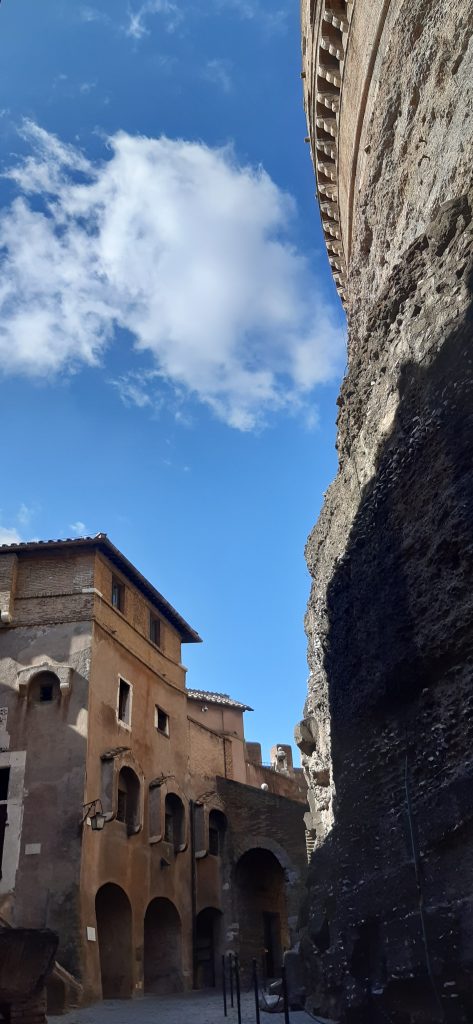
Once, in the second century AD, it was a Mausoleum, built by Emperor Hadrian, adopted son of Trajan, starting from 123 AD and only finished post mortem in 139 AD.
The area chosen was that of the Ager Vaticanus, beyond del Tevere, outside the heart of the city.
The tomb was connected to the city by the Pons Aelius, now known as the Ponte di Castel Sant’Angelo decorated by the Angels holding the symbols of passion (Bernini and Bottega).
For about 150 years the mausoleum housed the ashes of various emperors, the last one buried here with certainty was Caracalla in 217 AD.
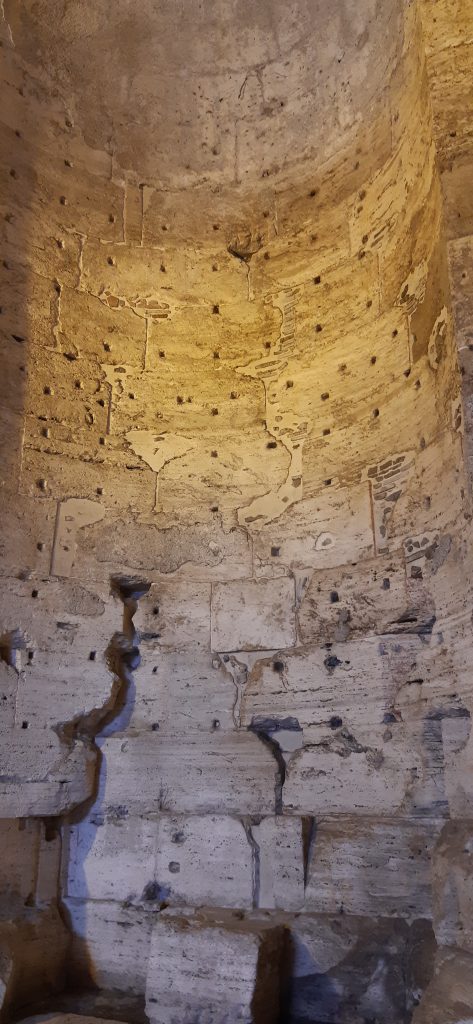
Starting from 476 AD, the fall of the Western Roman Empire, the tomb will definitively abandon its first function to begin its slow transformation into a fortress.
Contested by the most important Roman aristocratic families, in medieval times with Bonifacio IX it underwent the first radical changes.
In 1367 the keys of the building were delivered to Pope Urban V (also to urge the return of the papal seat to Rome, after the Avignon captivity), and so the monument was forever linked to the fate of the various Popes.
Great transformations took place with Niccolò V, Alessandro VI Borgia, Clement VII, Paolo III Farnese and Urban VIII Barberini.
Over the centuries it also became a place of imprisonment and famous executions
The visit to the Castle follows an obligatory path and lasts about 1h30 ‘.
You will find yourself in the Courtyard of Honor or of the Angel with the imposing sculpture of the Archangel Michael made by Raffaello da Montelupo, a pupil of Michelangelo, once positioned on the top of the Castle.
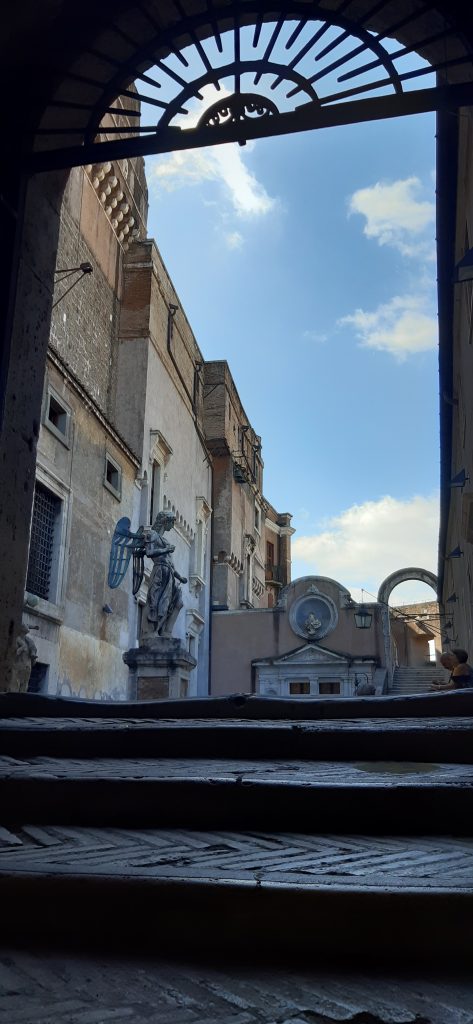
You will meet the Courtyard of the Balestra or of the Theater with the beautiful well decorated with the coat of arms of Pope Borgia and then suddenly with the halls of Clement VII and Paul III you will have a real dip in the Renaissance of Grotesques and frescoes “in the manner”.
An absolute masterpiece is the Sala Paolina with the splendor of Alexander the Great, commissioned by Paul III Farnese by Perin del Vaga, Pellegrino Tibaldi, and il Siciolante.
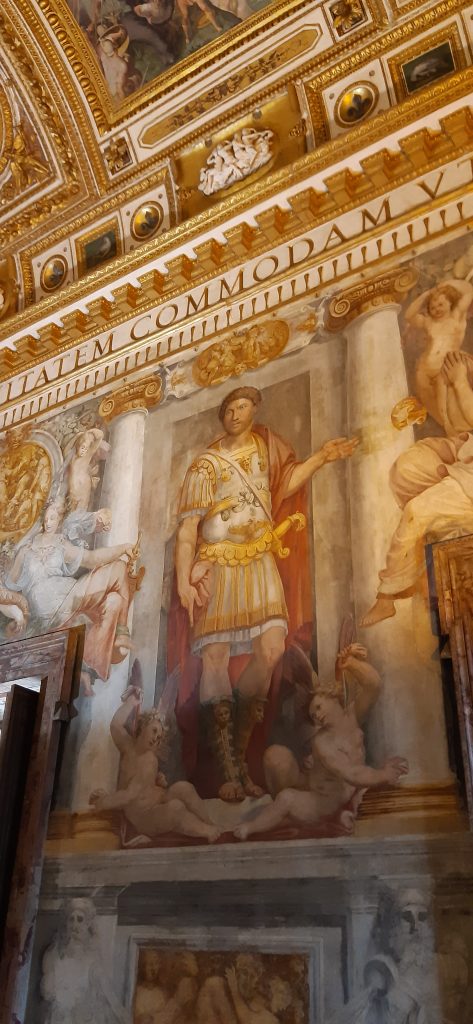
You just have to visit the Castle to discover many other stories … I forgot, but why is it called Castel Sant’Angelo?
In 590 during a procession led by Gregory the Great in order to intercede with the Lord to put an end to the terrible pestilence that was devastating the city of Rome, the archangel Michael appeared right on the top of the Mausoleum in the act of sheathing his sword, according to his wishes. indicate the end of the plague!
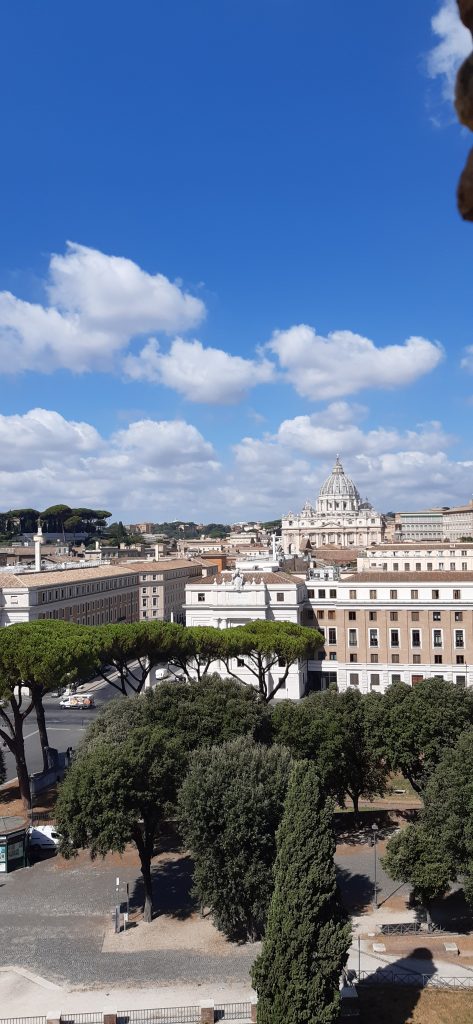
All rights reserved*
Follow me on IG/FB: selenia_eyeonart
InfoSite: Here
Luogo millenario che delinea con la sua architettura il panorama della città eterna.
Da Mausoleo imperiale a Fortezza papale! Avete capito di cosa parlo?
Impossibile non identificare… Castel Sant’Angelo!

Un tempo, nel II secolo d.C., era un Mausoleo, costruito dall’Imperatore Adriano, figlio adottivo di Traiano, a partire dal 123 d.C. e terminato solo post mortem nel 139 d.C.
L’ area scelta fu quella dell’ Ager Vaticanus, al di là del Tevere, fuori del cuore della città.
Il sepolcro era collegato alla città, dal Pons Aelius, oggi noto come Ponte di Castel Sant’Angelo decorato dagli Angeli reggenti i simboli della passione (Bernini e Bottega).
Per circa 150 anni il mausoleo ha ospitato le ceneri di diversi imperatori, l’ultimo qui sepolto con certezza fu Caracalla nel 217 d.C.

A partire dal 476 d.C., caduta dell’Impero Romano d’Occidente, il sepolcro abbandonerà definitivamente la sua prima funzione per iniziare la sua lenta trasformazione in fortezza.
Conteso dalle più importanti famiglie aristocratiche romane, in epoca medievale con Bonifacio IX subì le prime radicali modifiche.
Nel 1367 le chiavi dell’edificio vennero consegnate a Papa Urbano V (anche per sollecitare il rientro della sede papale a Roma, dopo la cattività avignonese), e così il monumento si legherà per sempre alle sorti dei diversi Pontefici.
Grandi trasformazioni si ebbero con Niccolò V, Alessandro VI Borgia, Clemente VII, Paolo III Farnese ed Urbano VIII Barberini.
Nel corso dei secoli divenne anche luogo di prigionia e di famose esecuzioni capitali
La visita al Castello segue un percorso obbligatorio ed ha la durata di 1h30’ circa.
Vi ritroverete nel Cortile d’Onore o dell’Angelo con l’imponente scultura dell’Arcangelo Michele realizzata da Raffaello da Montelupo, allievo di Michelangelo, un tempo posizionata sulla sommità del Castello.

Incontrerete il Cortile della Balestra o del Teatro con il bellissimo pozzo decorato dallo stemma di Papa Borgia e poi improvvisamente con le sale di Clemente VII e Paolo III vivrete un vero tuffo nel Rinascimento di Grottesche ed affreschi “alla maniera”.
Capolavoro assoluto la Sala Paolina con i fasti di Alessandro Magno, realizzata su commissione di Paolo III Farnese da Perin del Vaga, Pellegrino Tibaldi ed il Siciolante.

Non vi resta che visitare il Castello per scoprire tante altre storie… dimenticavo, ma perchè si chiama Castel Sant’Angelo?
Nel 590 durante una processione guidata da Gregorio Magno al fine di intercedere presso il Signore per porre fine alla terribile pestilenza che stava devastando la città di Roma, apparve proprio sulla vetta del Mausoleo l’Arcangelo Michele nell’atto di rinfoderare la spada, a voler indicare la fine della pestilenza!

InfoSite: Castel Sant’Angelo
Sostieni la cultura che vincea, aiuta la condivisione!
Segui le mie pagine IG / FB: selenia_eyeonart
Tutti i diritti sono riservati. E’ vietata qualsiasi utilizzazione, totale o parziale, dei contenuti inseriti nel presente portale, ivi inclusa la memorizzazione, riproduzione, rielaborazione, diffusione o distribuzione dei contenuti stessi mediante qualunque piattaforma tecnologica, supporto o rete telematica, senza previa autorizzazione scritta di Selenia Morgillo.